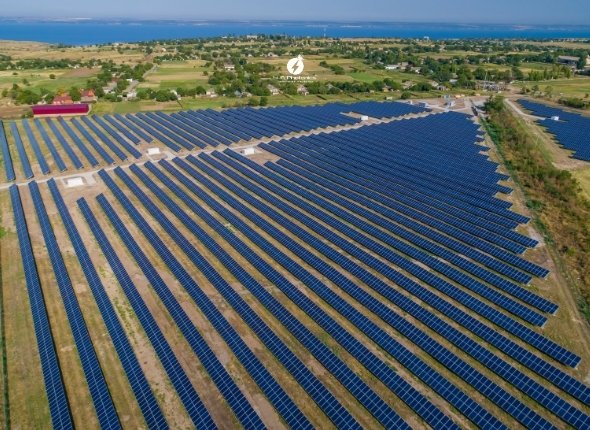As India accelerates its path toward clean and sustainable green energy, the role of Solar
Read MoreThe future of solar energy in India looks exceptionally promising, with the nation targeting 500 GW of non-fossil fuel capacity by 2030. Technological innovations such as perovskite cells, bifacial and floating solar panels, and building-integrated photovoltaics (BIPV) are driving this growth. At the same time, decentralization through peer-to-peer energy trading and microgrids, along with breakthroughs in energy storage like lithium-ion and solid-state batteries, are redefining how solar power is generated and consumed. With AI, IoT, and predictive maintenance tools further boosting efficiency, and policy support through initiatives like KUSUM and SECI, India is well on its way to becoming a global solar powerhouse. Sun Photonics is proud to contribute to this clean energy revolution through advanced, reliable, and scalable solar solutions.


India has raised its non-fossil energy target to 500 GW by 2030, up from 175 GW by 2022, marking a pivotal shift toward renewable. The Ministry of New & Renewable Energy plans to add 50 GW annually over the next five years to hit this goal. Key enabling mechanisms include competitive SECI auctions, which, despite a 39 % drop in Q1 2025 tender volumes, continue to discover record-low tariffs for solar + storage projects (₹3.32/unit, 5.8 % below prior tenders).
The PM-KUSUM Yojana targets 34,800 MW of decentralized solar by March 2026, underpinning rural electrification and Agri-PV models.
Perovskite Solar Cells
Commercial-grade perovskite cells promise >25 % efficiency at lower manufacturing costs, entering the market by 2025.
Their tenable bandgap allows tandem integration with silicon panels, potentially pushing efficiencies to 30 %+.
Bifacial and Transparent Panels
Bifacial modules harvest sunlight from both sides, increasing yield by 10–20 %—ideal for large-scale farms and rooftop arrays. Transparent PV can be seamlessly integrated into windows and facades, enabling energy-generating glass in buildings.
Floating Solar Farms
Floating PV on reservoirs reduces land use conflicts, mitigates water evaporation, and gains 5–15 % efficiency from panel cooling over water.
Blockchain-based platforms are enabling peer-to-peer (P2P) energy trading, letting prosumers sell surplus solar directly to neighbours. Microgrids powered by local solar and storage improve resilience in remote and disaster-prone areas, as demonstrated in Karnataka’s PM-KUSUM-C villages, feeding 68 MW daily into BESCOM’s grid.
Building-integrated photovoltaics (BIPV) embeds PV cells into roofs, windows, and facades, offering aesthetic and functional benefits without additional land use. Smart BIPV modules with self-cleaning coatings and dynamic tinting further enhance performance and user comfort.
Lithium-Ion vs. Solid-State Batteries
Lithium-ion remains the dominant, offering energy densities of around 200 Wh/kg. Meanwhile, solid-state battery prototypes are targeting up to 400 Wh/kg, with significant improvements in safety and lifespan. The integration of solar power with battery energy storage systems in recent auctions has helped drive tariffs down by 5.8% year-on-year, making round-the-clock clean energy more affordable and reliable.
Hybrid Solar Systems
Combining PV, wind, and storage optimizes dispatchability hybrid systems are increasingly bid in SECI tenders to stabilize grid input.


India’s local manufacturing push aims to capture 20 % of the global solar EPC and module market by 2030, leveraging lower labour and input costs. SECI’s RfS for 500 MW ISTS-connected PV projects invites global players to invest in India’s growing solar ecosystem.
As a SECI-impaneled, ISO-certified, NTPC-registered “government-registered” solar EPC firm, Sun Photonics specializes in industrial solar power solutions, including turnkey CAPEX solar installation, solar power OPEX (RESCO) model, solar plant operation and maintenance (O&M), renewable energy project advisory services, and advanced solar energy storage systems for commercial and industrial use.
Our focus on high-efficiency modules, integrated storage offerings, and smart tech deployments aligns with India’s roadmap and corporate ESG mandates.
The convergence of cutting-edge PV materials, digital intelligence, decentralized frameworks, and robust policy support positions solar energy as the linchpin of India’s clean-energy future. With the nation on track for 500 GW by 2030, firms like Sun Photonics that blend technological excellence and turnkey services will spearhead this transformation—fuelling sustainable growth and global leadership in solar.
Jatin Singh is a content developer at Sun Photonics Pvt. Ltd., specializing in creating impactful content for solar energy solutions. With a background in tech and health, he has previously worked in digital marketing and pharma. Passionate about sustainability, and currently exploring all things about solar!
Approval by an Expert:
“This content is reviewed and approved by Dr. Sujata Bhaker, who holds a Doctorate in Renewable Energy and brings over 10 years of industry expertise.”
India targets 500 GW of non-fossil fuel capacity by 2030, with solar playing a key role supported by tech innovation and strong policies.
PM-KUSUM promotes decentralized solar by supporting farmers with solar pumps and mini-grids, reducing costs and boosting rural power access.
New tech includes perovskite cells, bifacial panels, floating solar, and BIPV, all offering higher efficiency and flexibility.
India is adopting lithium-ion and solid-state batteries to store solar energy efficiently and ensure 24/7 power availability.
AI and IoT improve solar performance through real-time monitoring, automated adjustments, and predictive maintenance.
As India accelerates its path toward clean and sustainable green energy, the role of Solar
Read MoreIndia’s energy sector is transforming rapidly, and commercial rooftop solar has emerged as a core
Read MoreIntroduction: Why BIPV Is Gaining Traction in India (2025 Update)Cities are growing taller, streets are
Read MoreChoosing the Best Solar System for Industries is not just about going green — it’s
Read MoreRead our quick GEOA guide already? Cool. But this one’s built for people who need
Read More